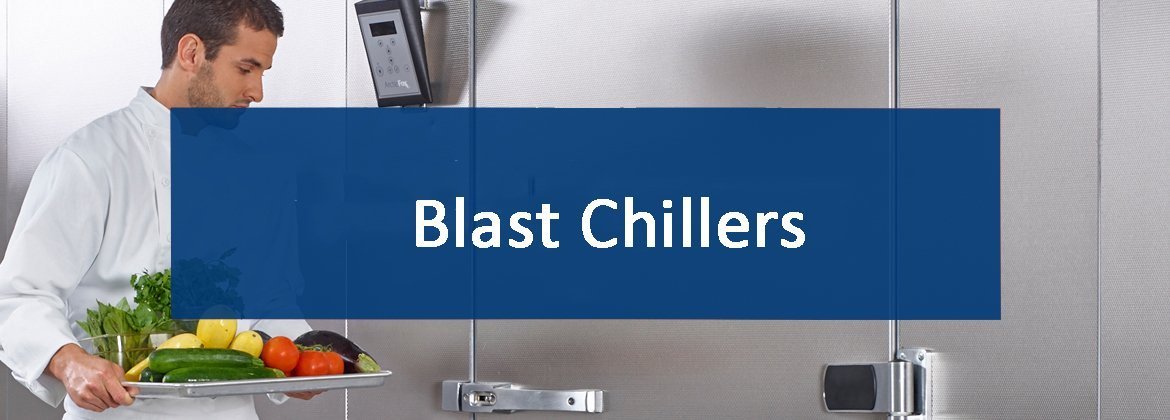Should You Invest In A Blast Chiller Or Freezer?

The benefits of having a blast chiller for food safety, food quality, labor savings, and decreased food waste make the investment a no-brainer. But, what do you really need to know to make a smart investment and reap the benefits that come with this game-changing addition to your line-up? As always, PJP is here to help! Buckle up, because we have some great information on Blast Chillers here to help you help your business.
The personality and needs of your operation can only be identified by you. The first step is to examine your specific needs…
Do you need a Blast Chiller or a Blast Chiller/Freezer?
Blast chillers alone are perfect for cook-chill applications. Blast chillers will safely bring temperatures out of the danger zone (41°F-135°F) to minimize the chance for bacteria and pathogens to grow. It retains the quality, texture, and freshness of food allowing foodservice professionals to prepare menu items during slow periods, and then chill for finishing just prior to service. Blast chilling also minimizes loss of moisture that occurs during cooling periods and minimizes shrinkage.
Blast chiller/freezers are your best choice for rapidly freezing food products for longer term storage. Blast freezing allows chefs to prepare menu items and rapidly freeze for later use. Food products rapidly frozen, cooked, and served will maintain their cellular structure, taste, and appearance as if they were just prepared for the first time.
What is the best style, size, and capacity for your operation?
There is a wide range of sizes to fit various workspaces, volumes, and budgets. Work with your dealer representative to incorporate your new blast chiller into a productive and efficient work flow for your kitchen.
Low profile versions are designed to fit under a combi oven for convenient transfer of food pans from oven to chiller. Capacities typically range from 35 lbs. of food in low profile versions, to 48 lbs. in undercounter units. Wire racks are usually included in low profile and undercounter models to adapt to various pan depths.
Reach-in models accommodate food pan rack assemblies used by many larger combi ovens, allowing a good kitchen flow from oven to chiller with an approximate 220 lb. capacity. Wire racks are typically provided to accommodate different pan depths.
For maximum capacity needs, there are roll-in and pass-thru models constructed of walk-in panels. Roll-ins and pass-thru models can be stand-alone or integrated into a walk-in plan and can accommodate over 500 lbs. of food. The roll-in racks, supplied with the blast chiller by some suppliers, usually hold (26) 12”x20”x2-1/2” pans.
Putting your blast chiller to work
Make sure the controls are clear and easy to use allowing operators to quickly select the program needed for the food being chilled or frozen. Most blast chillers allow chefs and operators to program custom cycles for specific menu items. Consider a system that includes a USB port to download HACCP data as needed and has alarms to warn if the chilling process is interrupted, so constant monitoring isn’t necessary. Another feature to look for is a foot-activated door opener for operator ease and speed during busy times.
Additional features to consider
Stainless steel construction is a good choice because it is long-lasting and easy to clean.
It should be easy to clean using just soap and water. Radius or rounded corners on the interior make the chiller easier to clean. Door gaskets should be easily removable for cleaning and self-contained models should have easy access to the condenser. Larger models should be constructed of 4” thick walk-in panels with foamed-in-place polyurethane insulation.
Blast chillers/freezers are not cheap, but the return on investment is high. Increased profits, peace of mind, labor and food savings are just a few of the benefits you will enjoy. Preparing recipes on your time schedule while maintaining that ‘just prepared’ flavor opens up opportunities for new menu items.
Making the initial jump can seem overwhelming. Hopefully, this gives you the knowledge to make an educated decision on your potential new investment. Write down your questions and talk to your equipment and supply consultant. They have the most knowledge about the equipment and know how to help you identify what will work best for your operation.
If you’re interested in making the switch to a blast chiller or freezer, don’t hesitate to call your PJP Sales rep!
Got a question for our team of experts? We want to help! We’ve been in the food service industry for over 55 years. We want to share that knowledge and expertise with you. Just fill out the form below and we’ll get back to you as soon as possible.
NEED HELP WITH THIS?
Get immediate help with this topic from a certified PJP Product Specialist.
Typical response within 24 hours.

